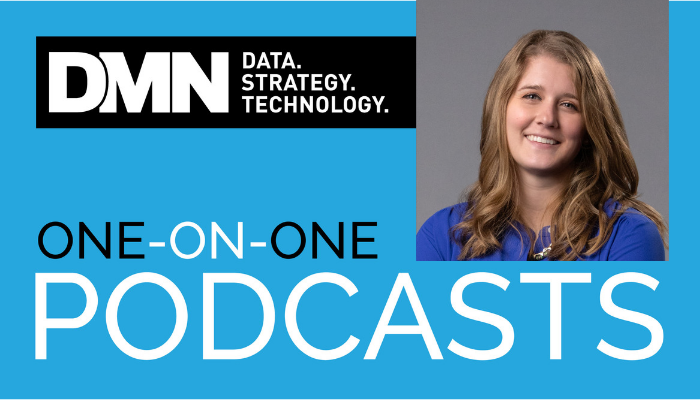by Larry Stewart
Content/Social Media Specialist Ashley Baker sat down with Chief Content Officer Christoph Trappe to offer her perspective on how to tell stories across digital channels.
Content Marketing World 2019 was full of discussions about storytelling, and The Karcher Group’s Ashley Baker was having none of it.
“Storytelling, now, is such a buzzword. I don’t even know if it’s an authentic story. It’s something everyone preaches. I wish I could come up with some brilliant word that we should use instead of ‘storytelling.’ We tell stories to kids – they’re fairy tales.”
The content and social media specialist says the whole idea of storytelling in marketing has become suspect. “I think it’s synthetic at this point. It’s fake.
“Especially in today’s media, everything is about who’s the coolest. Who can tell the best story? It’s not authentic anymore. Let’s get back to being honest.”
Her Ohio-based marketing agency includes truth and honesty as its core values.
“For us, that means I’m going to tell your truth regardless of whether or not you want to hear it,” she declares. “Sometimes it’s not pretty. I’ll try to cushion it a little bit, but I’m going to be brutally honest.”
Of course, a marketing message has to appear in marketing content – honesty is not about dishing a company’s dirt.
“But everything is a buzzword now. Read any piece of content – nothing is just written flat-out for a consumer. It has those buzzwords that everyone is looking for. Yes, that is going to make a sale so I’m not going to say totally omit that from your marketing. But use that buzzword with intent. Don’t cover up the real message of what you’re trying to say with it.”
Baker offers four steps to perfect the authentic the pitch:
1. Get real. Craft your content to speak about your real strengths, and skip the hyperbole in your stories.
“It’s [content marketing] a little more rehearsed than it used to be. We’re all putting on this façade of ‘We’re fantastic. We’re the best in the business.’ Realistically, we can’t all be great at everything. So let’s just own that.
“I try to leave out all that fluff. I want content to actually tell an authentic message instead of calling that a ‘story’.”
2. Come sit next to me. Think of how you’d share the message with somebody you trust, and who trusts you.
“I try to write to my best friend. Her name’s Rachel. If she asked me about buyer personas [for example], what would my unfiltered version be? I try to write that version.
“Then whittle out the things that might be a little bit too honest for what marketers want to hear.”
3. Serve something juicy. A major advantage of directing your message to a familiar face is avoiding marketing content that’s too safe.
“Look at what you’ve written to see where there are gaps; what is someone wanting to hear that you can give a real honest opinion on, instead of just blatantly writing what they want to hear?
“Give your opinions, be honest, try to write to somebody that you personally know well.”
4. If you don’t have a persona, write it down. People who say, “Oh I know who I’m writing for” are aiming at a target that’s too vague.
“If you look up Barkbox.com and Chewy.com, they have personas for the dogs that they’re selling to. They’re absolutely hysterical. But the personas are an indication of who the humans are behind those dogs. So everyone has personas, and everyone has someone that they’re writing to. You have to write those down.
“Otherwise you’re writing to a nameless person that you’ve invented in your head. I can give anyone any traits that I want to write to. But if you give me a piece of paper and say that somebody wants to hear about X, Y and Z [your persona’s key concerns], I have to focus my attention in those areas.”
That’s how you share stories that are authentic and not synthetic.








